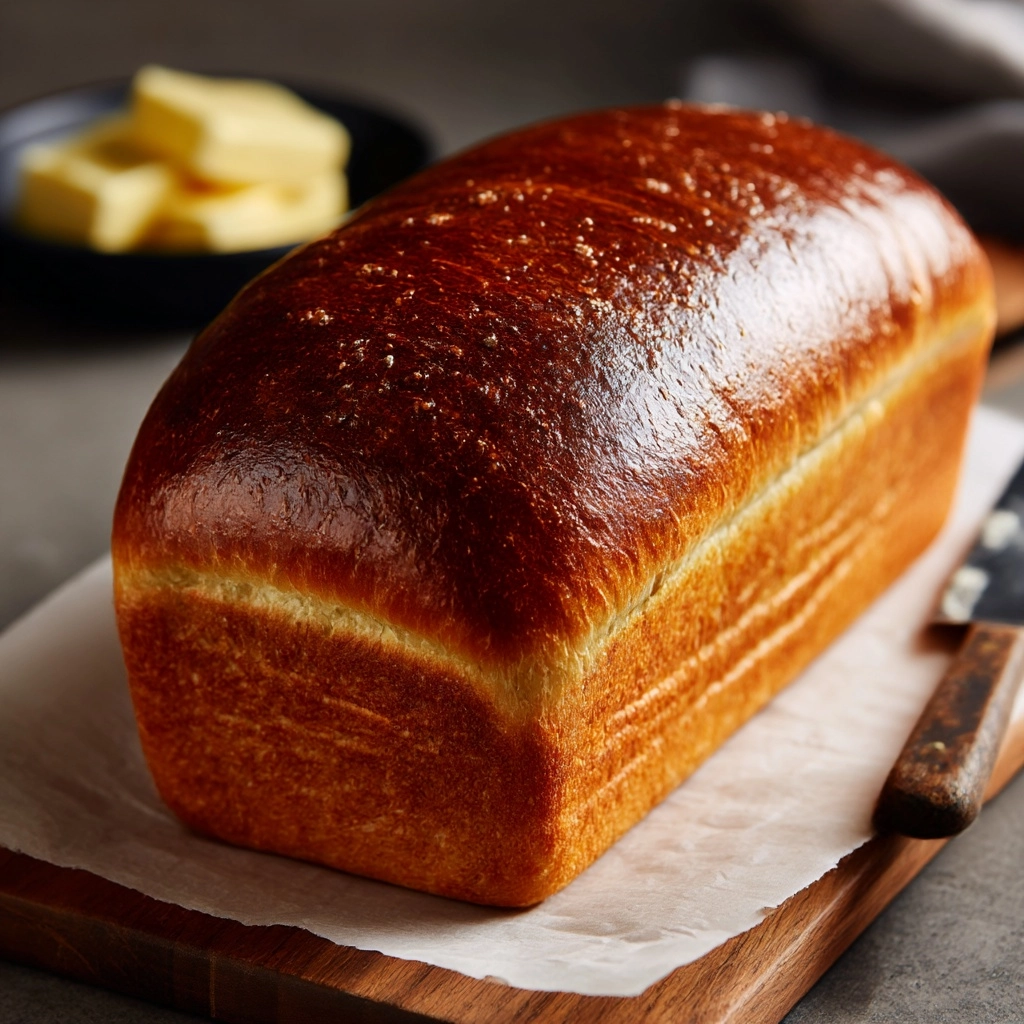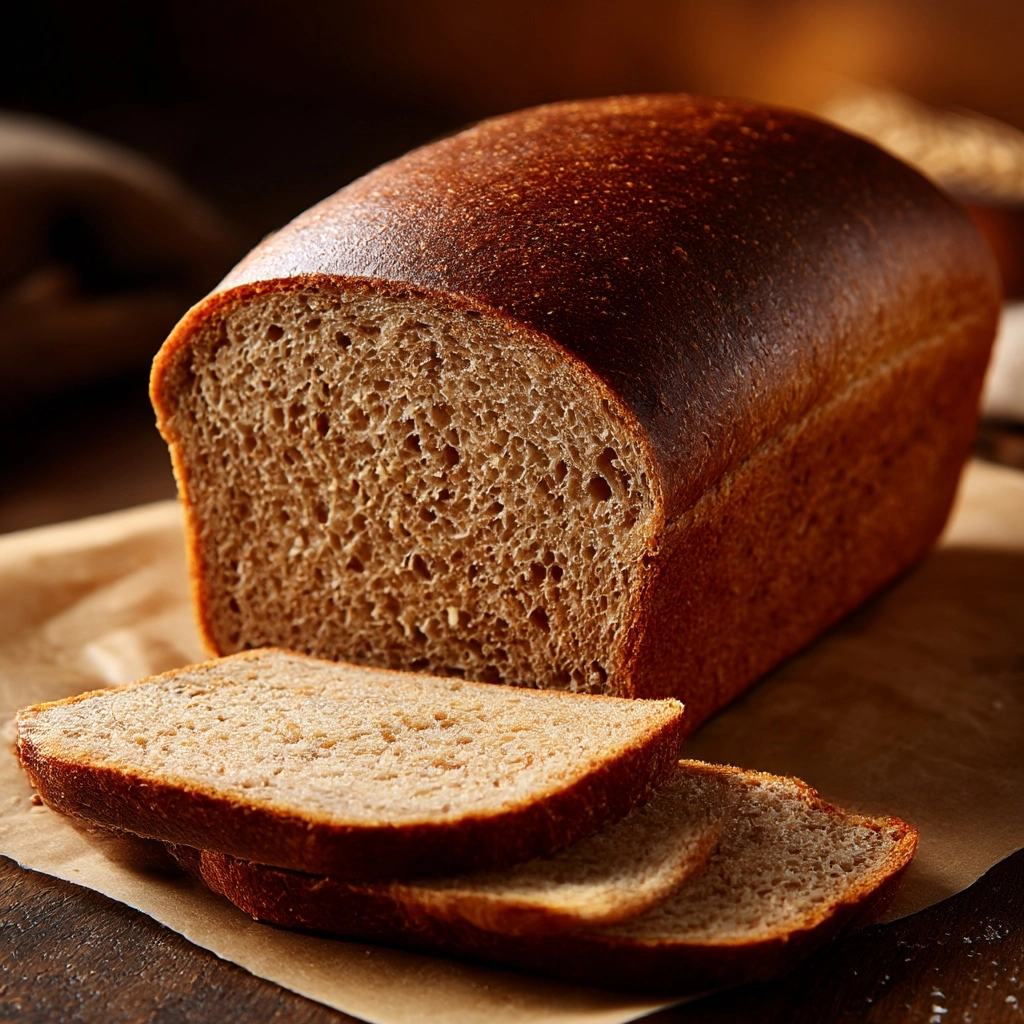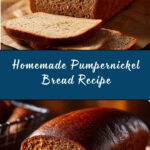If you dream in shades of rich, hearty bread, this homemade Pumpernickel Bread is calling your name! With its deep color, robust flavor, and a touch of sweetness, this classic loaf comes together with just a handful of pantry staples, yet emerges from the oven fragrant, soft, and beautifully rustic. Whether you spread it with butter, pile it high with smoked salmon, or simply sandwich your favorite cheese between two generous slices, Pumpernickel Bread delivers a taste experience that’s pure comfort—every bite is a celebration of old-world baking and the magic of real ingredients.
Ingredients You’ll Need
This Pumpernickel Bread recipe uses simple ingredients that all play their part, from rye flour for earthy depth to a dash of molasses for subtle sweetness. Each contributes to the bread’s signature flavor, color, and irresistible aroma—nothing complicated, just classic elements working together to make an unforgettable loaf.
- Warm Water (1 cup, 110°F): Provides the ideal temperature to activate the yeast and start the rise off right.
- Active Dry Yeast (2 ¼ teaspoons): The essential ingredient for getting that beautiful lift and pillowy texture.
- Molasses (1 tablespoon): Adds sweetness and that luscious, deep color distinctive to Pumpernickel Bread.
- Rye Flour (1 cup): The heart of the loaf, bringing rustic flavor and dense, moist crumb.
- Bread Flour (1 ½ cups): Supplies structure and just enough chew for the perfect slice.
- Whole Wheat Flour (½ cup): Enhances the bread’s nutty taste and wholesome texture.
- Unsweetened Cocoa Powder (1 tablespoon): Don’t worry, you won’t taste chocolate—this is the secret behind that gorgeous deep brown hue.
- Caraway Seeds (1 tablespoon, optional): For earthy, aromatic notes—classic in traditional pumpernickel, but you can skip if you prefer.
- Instant Coffee Granules (1 teaspoon): An old-school trick to boost both color and complexity in every bite.
- Salt (1 ½ teaspoons): Balances all the flavors and brings out the best in the bread.
- Vegetable Oil (2 tablespoons): Adds tenderness, helping the loaf stay soft and fresh longer.
How to Make Pumpernickel Bread
Step 1: Activate the Yeast
Pour the warm water into a large mixing bowl and sprinkle the active dry yeast over top. Add in the molasses and give it a gentle stir. Let this mixture rest undisturbed for 5 to 10 minutes, until it turns foamy—this is your yeast showing it’s ready to work its magic on your Pumpernickel Bread!
Step 2: Mix the Dry Ingredients
In a separate bowl, whisk together the rye flour, bread flour, whole wheat flour, cocoa powder, caraway seeds if using, instant coffee, and salt. This ensures every bite is packed with deep, balanced flavor and a gorgeous, uniform color throughout the loaf.
Step 3: Combine and Knead the Dough
Pour the flour mixture into the foamy yeast mixture, followed by the vegetable oil. Stir everything together with a sturdy spoon until you have a shaggy dough. Transfer it to a floured surface and knead for 8 to 10 minutes—don’t rush! The dough will transform into a smooth, elastic ball, and you’ll start to smell that classic Pumpernickel Bread aroma coming to life.
Step 4: First Rise
Place your kneaded dough in a lightly oiled bowl, turning it once so all sides are coated. Cover the bowl with a kitchen towel or plastic wrap and let it rise in a warm, draft-free place for 1 to 1 ½ hours, until doubled in size. This is when the yeast puffs up your dough with tiny, flavorful air bubbles.
Step 5: Shape and Second Rise
Punch down the dough to release built-up gas, then shape it into a round or oval loaf—it’s up to you! Set it on a parchment-lined baking sheet or nestle it in a greased loaf pan. Cover again and let it rise for another 30 to 45 minutes, giving your Pumpernickel Bread that final spring before baking.
Step 6: Bake to Perfection
Preheat your oven to 375°F (190°C) just before your dough finishes rising. Bake the loaf for 35 to 40 minutes; it’s done when it sounds delightfully hollow when tapped on the bottom. Transfer to a wire rack and let it cool completely for the best sliceability and crumb.
How to Serve Pumpernickel Bread
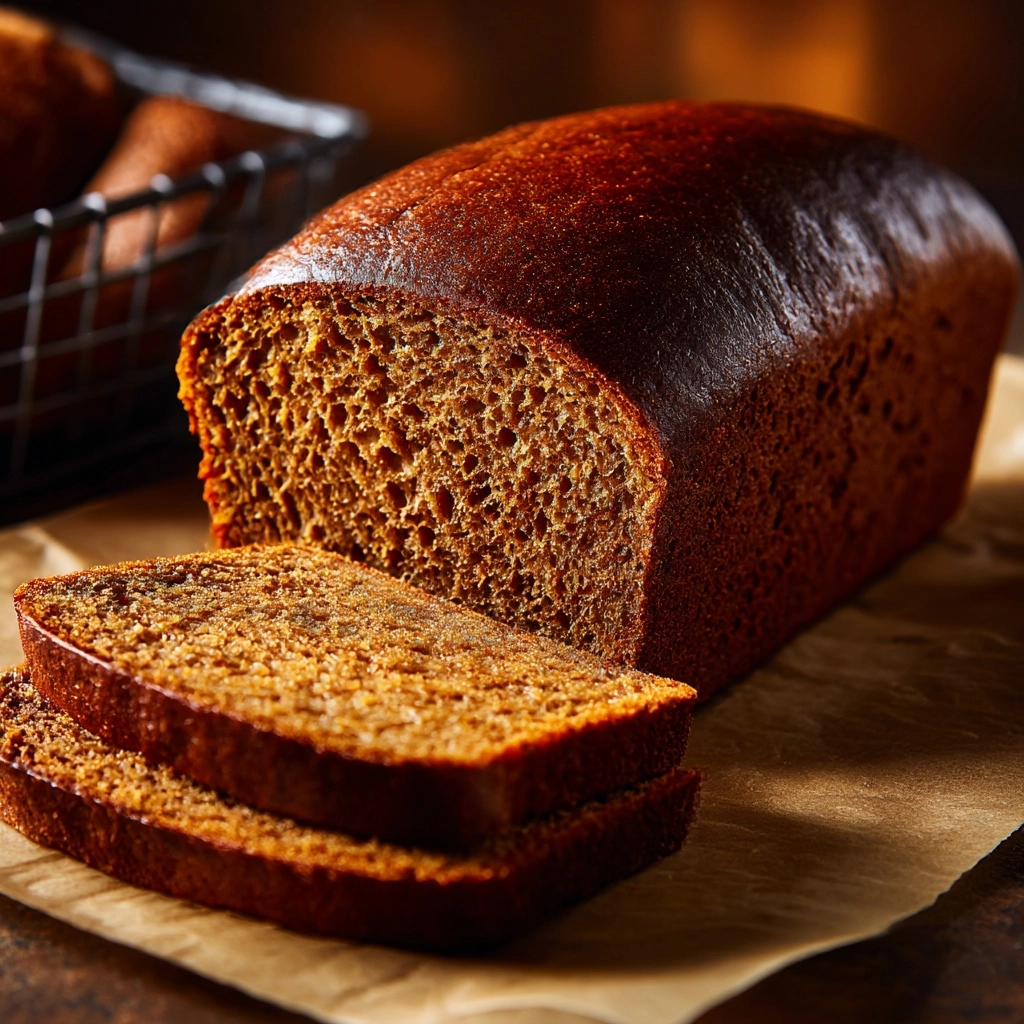
Garnishes
This loaf is a showstopper on its own, but a light brush of melted butter or a sprinkle of flaky sea salt right after baking adds a little extra sparkle. For visual flair, try dusting the crust with a touch of rye flour before placing it in the oven.
Side Dishes
Pumpernickel Bread pairs beautifully with hearty soups (think split pea or potato leek), tangy sauerkraut, or a simple plate of cheeses and pickled vegetables. You can also serve it alongside salads or as part of a sandwich platter for a truly memorable meal.
Creative Ways to Present
Slice your Pumpernickel Bread thick and use it as the foundation for open-faced sandwiches topped with smoked salmon, sliced radishes, or creamy avocado. For party appetizers, cut into bite-sized squares and top with herbed soft cheese and fresh herbs, or toast cubes for crunchy homemade croutons.
Make Ahead and Storage
Storing Leftovers
Once your Pumpernickel Bread is fully cooled, keep any leftovers in an airtight container or tightly wrapped at room temperature for up to 3 days. If you don’t think you’ll eat it all in time, slice and freeze some for later enjoyment.
Freezing
This bread freezes wonderfully! For easy portions, slice the loaf before freezing and separate slices with parchment. Store in a freezer-safe bag or container for up to 2 months—the flavor and texture will bounce right back after defrosting.
Reheating
To bring your Pumpernickel Bread back to fresh-baked glory, warm slices in a toaster or oven for a few minutes. If reheating a whole loaf, wrap it in foil and place in a 325°F oven for about 10 minutes. Serve warm for maximum comfort and aroma.
FAQs
Can I use all-purpose flour instead of bread flour?
You certainly can swap in all-purpose flour in a pinch, but bread flour will give your Pumpernickel Bread a little more structure and a chewier bite. If you go with all-purpose, your loaf will still be delicious—just a bit softer in texture.
What does the coffee do in Pumpernickel Bread?
The instant coffee doesn’t make your bread taste like a cup of joe—instead, it deepens the color and enhances the rich, earthy flavors in the loaf without making it taste overtly of coffee.
Why is Pumpernickel Bread so dark?
The deep color comes from a magical mix of rye flour, molasses, unsweetened cocoa powder, and instant coffee. These ingredients create that unmistakable dark, moody hue without overpowering the classic flavor profile.
What should I do if my dough seems sticky?
It’s normal for Pumpernickel Bread dough to feel a bit tacky because of the rye and whole wheat flours. If it feels too sticky to handle, dust your work surface and hands with a little extra bread flour, but avoid adding too much or you’ll lose that lovely dense texture.
Can I double the recipe for two loaves?
Absolutely! Double all of the ingredients and simply divide the dough in half after kneading. Bake both loaves side by side or freeze one for future cravings—you can never have too much Pumpernickel Bread on hand!
Final Thoughts
There’s nothing quite as satisfying as pulling a loaf of homemade Pumpernickel Bread from your oven and sharing it with people you love. Give this recipe a try, and get ready to impress yourself with just how flavorful and beautiful homemade bread can be. Happy baking!
Print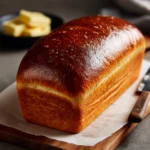
Pumpernickel Bread Recipe
- Prep Time: 20 minutes
- Cook Time: 40 minutes
- Total Time: 2 hours 30 minutes (includes rising)
- Yield: 1 loaf (8–10 slices)
- Category: Bread
- Method: Baking
- Cuisine: German
- Diet: Vegetarian
Description
Learn how to make a delicious homemade Pumpernickel Bread with this easy-to-follow recipe. This dark and flavorful bread is perfect for sandwiches or enjoyed on its own.
Ingredients
For the Bread:
- 1 cup warm water (110°F)
- 2 ¼ teaspoons active dry yeast
- 1 tablespoon molasses
- 1 cup rye flour
- 1 ½ cups bread flour
- ½ cup whole wheat flour
- 1 tablespoon unsweetened cocoa powder
- 1 tablespoon caraway seeds (optional)
- 1 teaspoon instant coffee granules
- 1 ½ teaspoons salt
- 2 tablespoons vegetable oil
Instructions
- Prepare the Yeast Mixture: In a large bowl, combine warm water, yeast, and molasses. Let sit until foamy, about 5–10 minutes.
- Mix the Flours: In a separate bowl, combine rye flour, bread flour, whole wheat flour, cocoa powder, caraway seeds, coffee granules, and salt.
- Combine Ingredients: Add the flour mixture and vegetable oil to the yeast mixture. Stir until a dough forms.
- Knead the Dough: On a floured surface, knead the dough for 8–10 minutes until smooth and elastic.
- Rise and Shape: Place the dough in a bowl, let it rise until doubled, then shape into a loaf.
- Second Rise: Let the shaped dough rise again for 30–45 minutes.
- Bake: Preheat oven to 375°F, bake the bread for 35–40 minutes until hollow when tapped.
- Cool and Slice: Cool the bread on a wire rack before slicing.
Notes
- For extra flavor, use brewed coffee in place of some water.
- Store in an airtight container at room temperature for up to 3 days or freeze for longer freshness.

